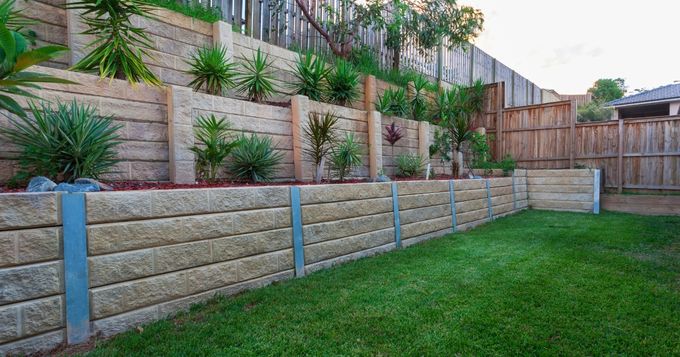
In the artful design of an Asian garden, harmony, simplicity, and symbolism combine into beauty. The integration of natural elements and structural features is essential. These gardens are a testament to deliberate care and deep respect for nature. They reflect the different aspects of soulfulness, nature, and the changing seasons.
At the heart of these quiet spaces are the retaining walls and boulders, which are far more than functional elements. They are, in fact, important in sculpting the garden’s landscape.
Consider the following:
- Japanese gardens often feature sloping terrains; this is especially true in areas like San Francisco’s hills. Retaining walls help create terraced levels, helping prevent erosion, stabilize slopes, and allow for designated planting areas.
- Retaining walls help control water flow, serving as a subtle detour and directing water toward ponds or drains. This careful water channeling prevents damage and adds a dynamic element to the garden.
- Retaining walls and boulders can define your garden layout. They can help create inviting pathways that guide visitors along, as well as provide areas for meditation within the garden.
- Most importantly, boulders and retaining walls offer structural support to prevent soil erosion. Stopping erosion is crucial for keeping the garden’s balance, preserving its design, and creating a lasting and stable environment.
Understanding Asian Garden Principles
The key elements in every garden design are balanced natural pieces. Japanese garden principles mimic the harmony found in nature. For example, rocks and stones, water features, trees and plants, bridges, and lanterns are all common in Asian garden design. Every element carries a symbolic meaning with spiritual significance.
Balance (Kankyo) is expressed by carefully arranging rocks, plants, and other elements. This visual balance creates a sense of tranquility. Tranquility (Seijaku) results from water features and design elements that inspire inner peace and calm.
Building Harmony Between Retaining Walls and Boulders in Zen Gardens
The skill of creating Zen gardens is in creating a balanced and harmonious landscape design. Boulders and retaining walls are key. They’re functional, sure, but they also contribute to a balanced and visually appealing outdoor area. In every authentic Japanese garden, everything – stepping stones, stone lanterns, retaining walls – works together to lead the visitor’s gaze.
With Asian garden design, each element is thought out. Focal points are carefully placed. Cherry blossoms and bright red maple trees add a burst of color. Stone lanterns and stepping stones further accentuate the garden’s beauty, making it a true embodiment of Zen principles.
Every aspect of a Zen garden is designed to create a tranquil outdoor space. From where to place the boulders to what materials to use for your retaining wall, it’s a careful arrangement of aesthetics. This careful arrangement results in a landscape that invites contemplation and peace in every corner.
Balance: A Key Concept
In Asian garden design principles, particularly within the Japanese landscape, balance is a fundamental principle. You can see this in the use of boulders and retaining walls, even in a small garden.
These important elements create the illusion of a natural landscape and aren’t just decorative. They help establish that sense of harmony and tranquility, reflecting the core ideals of Japanese garden design. Every component contributes to an overall sense of unity, from a dry landscape to the wind paths in a strolling garden.
In these gardens, visitors often find themselves deeply engaged. You can see how each boulder and retaining wall plays an important role in the overall design. This balance allows a Japanese garden, large or small, to have a deep connection with the natural world. Ultimately, it creates a peaceful retreat in even the most urban settings.
Moreover, the role of these elements in creating a dry landscape garden is crucial. In the absence of water, rocks, and gravel artfully represent the flowing and pooling of water. This approach uses features that mimic the contours and textures of a natural landscape.
Practical Applications
You have the freedom to explore every design possibility available. You can draw inspiration from an almost unlimited supply of design examples. Books, magazines, online platforms, garden design websites, professional garden designers, and online communities can offer and share great landscaping ideas.
Why not make plans to visit a Japanese garden in your area? With a little research, you’re sure to find and implement the practical solutions that can help you create a garden paradise.
Creating a Serene Atmosphere
A serene atmosphere can have profound effects on a person’s mind and body. A Japanese garden can provide the tranquil ambiance that people need for those quiet moments of inner reflection.
Create winding pathways and bridges to guide the flow of movement through the garden, promoting a sense of exploration and discovery. Don’t forget to plan for seasonal changes by selecting colors, plants, and textures to provide garden serenity throughout the year. Plan regular maintenance and pruning schedules for your garden to keep it neat and orderly. This aligns with the concept of Wabi-Sabi, which implies finding beauty in imperfection.
Maintenance and Sustainability
Sustainable landscaping involves choosing materials that promote sustainability. It also includes using construction techniques that are eco-friendly. Your maintenance should include timely repairs and inspections, as well as the proper care to preserve the authenticity of your garden. This way, you can preserve the beauty of your Japanese garden for years to come.
Timeless Examples
The Japanese Tea Garden in San Francisco offers an amazing opportunity to experience the beauty of Japanese maples, clipped azaleas, twisting pines, boulders, bridges, and cherry trees. There, you’ll find every crucial element of Asian garden design at its finest. These are perfect examples of Japanese garden examples that prove there is such a thing as “botanical splendor.” Plan visits so you can document your project highlights to gather a wealth of ideas.
Conclusion
Japanese garden design offers a creative opportunity for people who love the principles of harmony and serenity to put their skills to work. Every element of Japanese garden design symbolizes beauty, balance, and peace. Visit the venues we mentioned for landscaping inspiration. We invite you to embark on a pleasant journey to discover more about the beauty of Japanese garden aesthetics.


